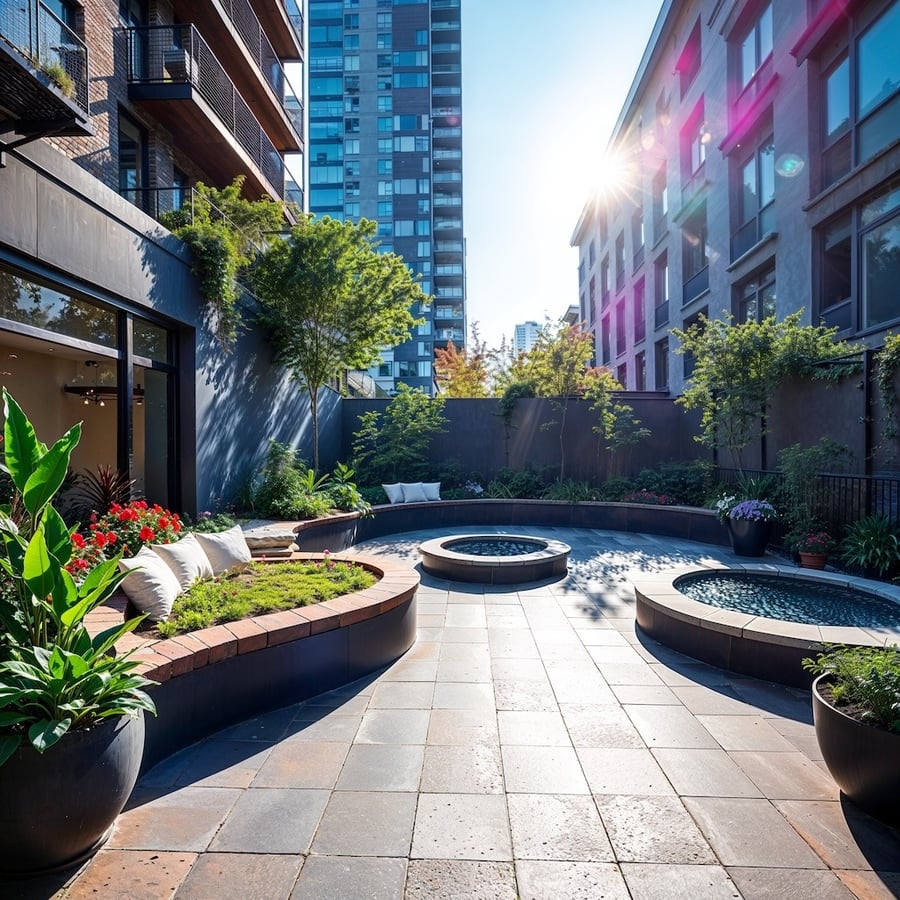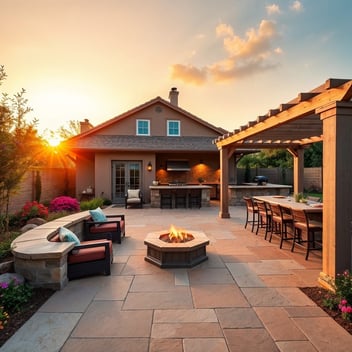Maximize Your Small Garden: Expert Tips for Stunning Outdoor Spaces

After 25 years of transforming Long Island properties of all sizes, I've learned that a small garden space isn't a limitation—it's an opportunity for creativity. Some of my most rewarding projects have been helping homeowners turn modest outdoor areas into stunning, functional retreats. In this guide, I'll share professional insights on maximizing small garden spaces, drawing from my experience creating award-winning gardens in the Hamptons and throughout Long Island.
Understanding Your Space: The Foundation of Smart Design
Before diving into design elements, let's explore how to assess and prepare your small garden space effectively. Through my years of experience at Greene Spaces and working with countless Long Island homeowners, I've developed a systematic approach to small garden design that consistently delivers outstanding results.
Essential Pre-Design Considerations
- Sun Exposure Analysis: Track sunlight patterns throughout the day and seasons. I recently worked with a client in a townhouse who was convinced nothing would grow in their shaded patio. By carefully mapping sun patterns, we discovered a perfect spot for a vertical herb garden that thrives in the morning sun.
- Soil Quality Assessment: Even in small spaces, soil quality varies. Consider getting a soil test done—it's an investment that pays off. One of my clients was struggling with container plants until we discovered their soil's pH was too acidic. A simple adjustment transformed their garden's health.
- Microclimates: Small spaces often create unique microclimates. Areas near walls can be warmer, while corners might trap cold air. Understanding these variations helps in plant selection and placement. I've used this knowledge to create year-round interest in spaces as small as 100 square feet.
- Existing Features: Document permanent elements like utilities, drainage patterns, and neighboring structures. These aren't obstacles—they're opportunities. I once transformed a client's unsightly utility box into a focal point by surrounding it with ornamental grasses and climbing vines.
Design Principles for Small Gardens
The key to successful small garden design lies in understanding and applying fundamental design principles while adapting them to limited spaces. Here's what I've learned from creating countless compact gardens across Long Island.
Maximizing Visual Space
- Vertical Elements: Incorporate upward growth to expand your garden's dimensions. I've installed living walls that transformed blank fences into lush, green tapestries, effectively doubling the garden's visual impact. For more inspiration on vertical solutions, check out our guide on expert residential landscaping services.
- Layered Planting: Create depth by arranging plants in layers—ground covers, mid-height perennials, and taller structural plants. In one townhouse project, we used this technique to create the illusion of a much larger space, incorporating over 20 different species in just 200 square feet.
- Strategic Focal Points: Place eye-catching elements to draw attention where you want it. A beautiful container garden or architectural plant can become a conversation piece while directing attention away from size limitations. Learn more about selecting the perfect focal points in our article about creating luxurious outdoor spaces.
Smart Plant Selection for Small Spaces
Choosing the right plants is crucial in small gardens. Every plant needs to earn its place by providing multiple benefits throughout the seasons.
Best Plants for Compact Gardens
- Multi-Season Performers: Select plants that offer interest across multiple seasons. Japanese Maples, for instance, provide spring color, summer shade, fall drama, and winter structure. One of my clients' favorite combinations includes dwarf evergreens for year-round structure, interspersed with seasonal bloomers for constant color. For more plant selection tips, visit our guide on natural lawn care and plant selection.
- Compact Varieties: Choose dwarf or naturally compact varieties of your favorite plants. Modern breeding has given us many options—dwarf hydrangeas, compact boxwoods, and miniature roses that pack all the punch of their larger cousins into a smaller footprint. I recently designed a pocket garden using exclusively dwarf varieties that provides year-round interest in just 150 square feet.
- Vertical Growers: Incorporate climbing plants and vines strategically. Clematis, climbing roses, and annual vines like morning glories can add height without taking up valuable ground space. In one project, we created a stunning privacy screen using climbing hydrangea that provided both beauty and functionality.
Functional Design Elements
Small gardens need to work harder to meet multiple needs. Here's how to incorporate functional elements without sacrificing style.
Essential Features for Small Gardens
- Multi-Purpose Features: Design elements that serve multiple functions save space and add value. Built-in seating with storage underneath, raised beds that double as casual seating edges, or a water feature that masks urban noise while providing visual interest are all excellent examples. For more ideas on functional outdoor spaces, explore our article on innovative backyard design ideas.
- Smart Storage Solutions: Incorporate hidden storage areas for garden tools and equipment. Custom-built storage benches, decorative boxes, or even hollow decorative elements can keep necessary items close at hand without cluttering your space. One of my favorite designs included a custom cedar storage bench that looked like a high-end seating area but housed all the homeowner's garden tools.
- Flexible Spaces: Create areas that can adapt to different uses. A small patio might serve as a dining area, lounging space, or entertaining zone depending on the occasion. Using moveable furniture and planters allows for easy reconfiguration as needs change.
Maintenance Considerations
A well-designed small garden should be a joy to maintain, not a burden. Here's how to keep maintenance manageable while maximizing enjoyment.
Smart Maintenance Strategies
- Efficient Irrigation: Install smart irrigation systems that deliver water precisely where needed. Drip irrigation and soaker hoses are perfect for small spaces, ensuring plants get adequate water while minimizing waste. One of my clients reduced their water usage by 40% after installing a smart irrigation system in their compact garden. Learn more about efficient irrigation in our seasonal lawn care guide.
- Low-Maintenance Plant Combinations: Group plants with similar water and care requirements together. This simplifies maintenance and ensures all plants thrive. Native plants often work well in these combinations, as they're adapted to local conditions and generally require less care. Discover more about native plants in our article about sustainable landscaping with native plants.
- Smart Hardscaping: Choose materials that weather well and require minimal upkeep. Composite decking, quality pavers, and cedar structures might cost more initially but save time and money on maintenance. The key is selecting materials that complement your home's style while standing up to local weather conditions.
Conclusion
Small garden spaces present unique opportunities to create intimate, highly personalized outdoor retreats. By following these design principles and incorporating smart solutions, you can transform even the most modest space into a stunning and functional garden. Remember, professional guidance can help you avoid costly mistakes and achieve your vision more quickly. For personalized advice on your small garden project, consider consulting with our expert team at Varello Landscaping.
Ready to transform your small outdoor space? Explore our landscape design and architecture services or contact us to schedule a consultation. Our experienced team can help you create the perfect garden that maximizes your available space while minimizing maintenance requirements.



